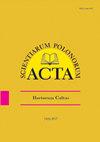Effect of high-energy ionizing radiation on the DNA content and genetic variation in chrysanthemum plants regenerated from irradiated ovaries
IF 0.7
4区 农林科学
Q4 HORTICULTURE
引用次数: 0
Abstract
This study aimed to evaluate the range of quantitative and qualitative genetic changes in chrysanthemum plants regenerated in vitro from ovaries irradiated with high-energy photons (5, 10, and 15 Gy) and high-energy electrons (10 Gy). The highest DNA loss (up to 11%) was observed in plants originating from ovaries treated with 10 Gy high energy. AMOVA revealed significant differences between populations of plants representing different mutagenic treatments (18% for RAPD-based and 22% for SCoT-based analysis). The incidence of genetic changes was strongly correlated with the applied type and dose of ionizing radiation. The highest genetic distances to reference plants were observed for plants regenerated from 15 Gy high-energy photon (5.8% with RAPD and 1.7% with SCoT) and 10 Gy high-energy electron-treated explants (6.0% with RAPD and 2.9% with SCoT). Considerable changes in the phenotype of mutants were not necessarily correlated with the extent of genetic alterations. Qualitative and quantitative methods of evaluating post-radiation genetic changes should be combined for reliable detection of variant plants at early developmental stages.高能电离辐射对辐照子房再生菊花DNA含量及遗传变异的影响
本研究旨在评价高能光子(5、10和15 Gy)和高能电子(10 Gy)辐照下菊花离体子房再生植株的数量和质量遗传变化范围。在10 Gy高能处理的子房中,DNA损失最高(高达11%)。AMOVA显示,不同诱变处理的植物群体之间存在显著差异(基于rapd的分析为18%,基于scot的分析为22%)。遗传变异的发生与电离辐射的类型和剂量密切相关。15 Gy高能光子(RAPD为5.8%,SCoT为1.7%)和10 Gy高能电子处理外植体(RAPD为6.0%,SCoT为2.9%)再生植株与参考植株的遗传距离最高。突变体表型的显著变化并不一定与遗传改变的程度相关。为了在植物早期发育阶段可靠地检测变异,应将评价辐射后遗传变化的定性和定量方法结合起来。
本文章由计算机程序翻译,如有差异,请以英文原文为准。
求助全文
约1分钟内获得全文
求助全文
来源期刊
CiteScore
1.30
自引率
14.30%
发文量
61
审稿时长
4-8 weeks
期刊介绍:
In Acta Scientiarum Polonorum Hortorum Cultus we publish original research papers and review articles containing new and significant information on broad aspects of horticulture and related disciplines. The papers are published in English only, in six issues yearly.

 求助内容:
求助内容: 应助结果提醒方式:
应助结果提醒方式:


